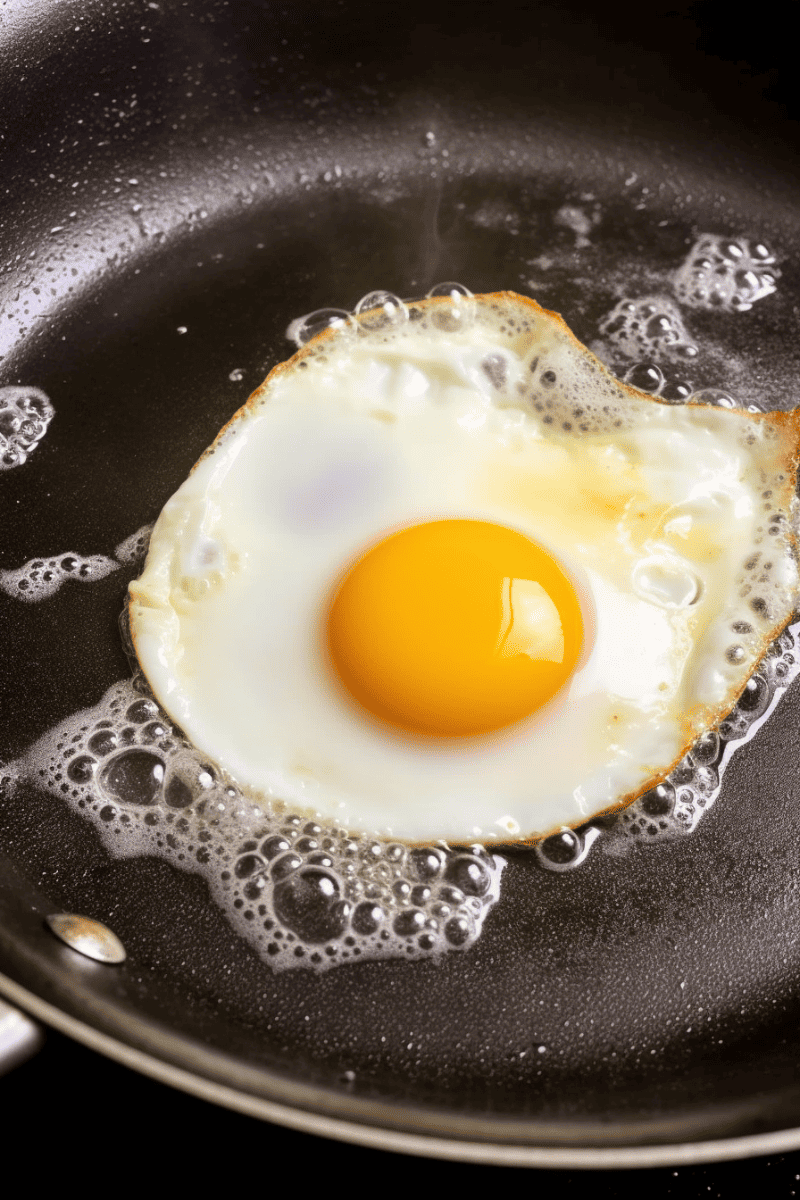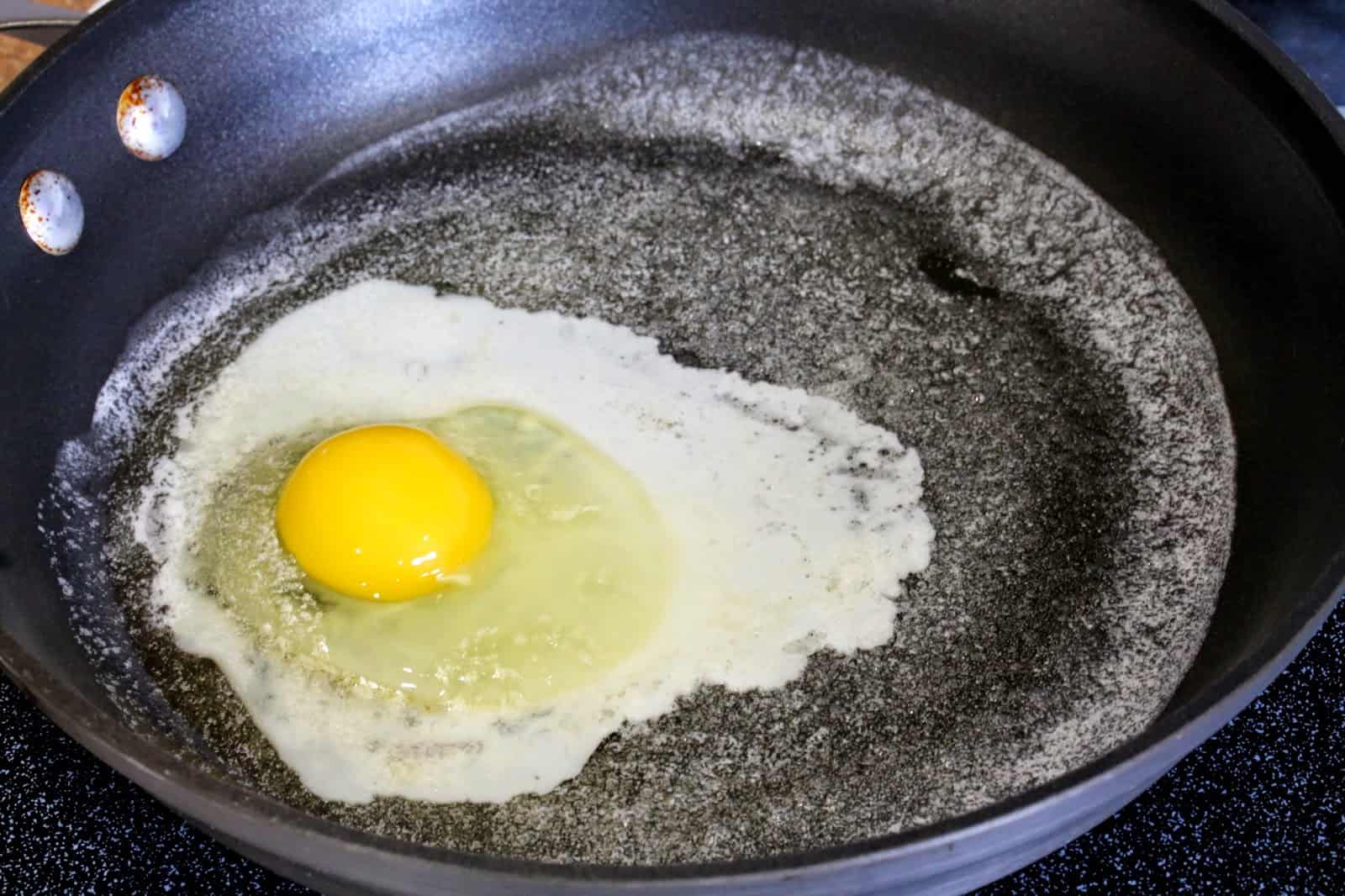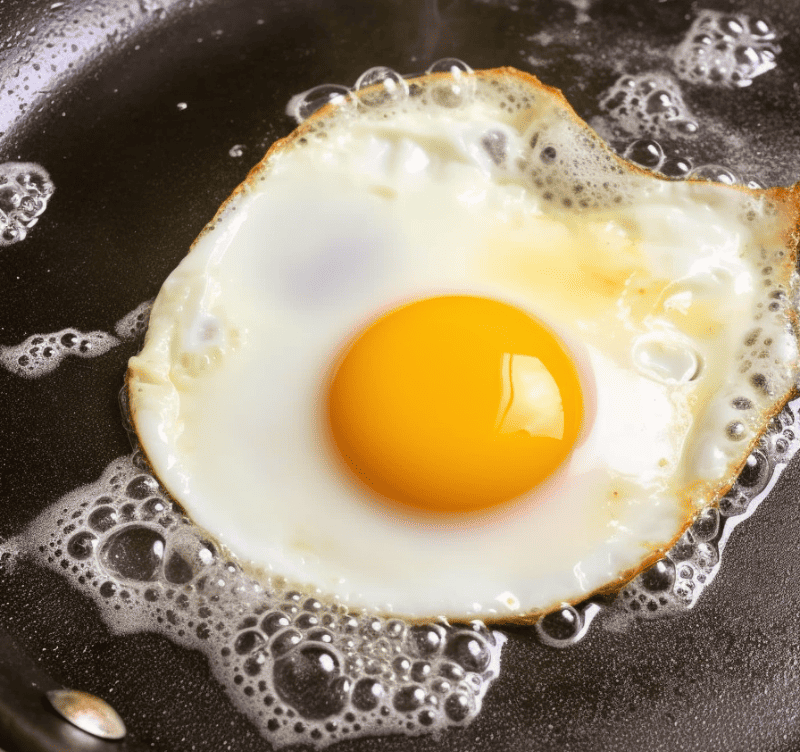
Your complete guide for how to fry eggs including sunny-side-up, over easy, over medium, and over hard so you can learn to make the perfect fried egg at home.
Welcome to your one-stop destination for mastering the art of frying eggs. With this comprehensive guide, you’ll learn the intricacies of preparing eggs sunny-side-up, over easy, over medium, and over hard. Our aim is to empower you to navigate your home kitchen like a pro, and cook up eggs just the way you like them—every time. Whether you’re a seasoned home cook or just beginning your culinary journey, there’s always something new to learn and experiment with when it comes to the humble, yet versatile, fried egg. Let’s dive in and crack the secrets to egg-cellent home-cooked eggs together!
The 4 Styles of Fried Eggs
Whether you enjoy your yolk runny or fully set, there’s a fried egg style to suit your preference. Each style brings with it a distinct texture and unique culinary uses. Let’s delve into the delicious world of sunny-side-up, over-easy, over-medium, and over-hard eggs.
Sunny-Side-Up
A sunny-side-up egg is all about the contrast between the tender whites and the rich, liquid yolk. It’s cooked only on one side, with the top being glossy and the yolk remaining delightfully runny. This style is perfect for those who enjoy dipping their toast into the yolk. It’s also a popular choice for topping rice bowls, burgers, or salads, providing a rich, creamy element that coats the other ingredients upon breaking.
Over-Easy
For an over-easy egg, the aim is to achieve slightly cooked edges with a yolk that’s still mostly liquid. The egg is lightly flipped to cook on both sides, but only for a short time, to keep the yolk runny. Over-easy eggs are perfect for dishes where you want a bit more solidity to the egg white, but still enjoy a deliciously runny yolk, such as in a classic bacon and egg breakfast.
Over-Medium
An over-medium egg strikes a balance between an over-easy and an over-hard egg. The egg is flipped and cooked until the yolk is semi-solid—still somewhat runny but with more structure. If you enjoy your yolk slightly runny but not too liquid, this is the style for you. Over-medium eggs work well in sandwiches or wraps, where you might not want a fully runny yolk.
Over-Hard
Over-hard eggs are cooked thoroughly on both sides, resulting in a fully set yolk, similar to a hard-boiled egg. This style is excellent for those who prefer a more solid texture, or for use in recipes where a runny yolk may not be desirable, like in a packed lunch. It’s also a good choice for those who want to chop up their eggs and add them to dishes like fried rice or salads.
Frequently Asked Questions
Nonstick pans are ideal for frying eggs, as they allow easy flipping and prevent the egg from sticking.
The key to a perfect flip is to be gentle and use a wide spatula. Slide the spatula under the egg, ensure it’s fully supported, and turn it with confidence.
The egg’s appearance will indicate its doneness. For sunny side up, the whites should be fully set, while the yolk remains soft. For over-easy to over-hard eggs, the doneness of the yolk varies from runny to fully set, respectively.

Cooking Fat Options
When frying eggs, the choice of fat can significantly influence the final product’s taste and texture. Here, we explore the most common options, detailing their flavor profiles and cooking properties.
- Butter: Perhaps the most traditional choice, butter lends a creamy, slightly sweet flavor to the eggs. When cooked over moderate heat, butter can give your eggs a beautiful golden-brown hue. It’s important to avoid overheating, as butter can easily burn, giving your fried egg a bitter taste.
- Olive Oil: A healthier alternative, olive oil is known for its fruity, slightly peppery notes. When you fry an egg in olive oil, especially the extra virgin variety, it imparts a distinct Mediterranean flair to the dish. It’s worth noting that olive oil has a lower smoke point than some other fats, so keep your heat medium to medium-low.
- Canola or Vegetable Oil: These oils are celebrated for their neutral flavor profile and high smoke points. If you prefer your egg’s taste to stand front and center, canola or vegetable oil would be your best bet. They allow for higher heat cooking and ensure your egg doesn’t stick to the pan.
- Coconut Oil: For those seeking a tropical twist, coconut oil offers a unique aromatic sweetness. It has a moderate smoke point, similar to butter, and can create a crispy, slightly sweet egg edge.
- Avocado Oil: With one of the highest smoke points, avocado oil allows you to fry your eggs at higher temperatures without worrying about the oil smoking or breaking down. Its flavor is mild and buttery, and it can add a hint of nuttiness to your eggs.
Troubleshooting Guide
Even the simplest dishes can sometimes go awry. But don’t worry—once you understand potential pitfalls, mastering the art of the perfect fried egg becomes much easier. Here’s a handy guide to troubleshooting common issues when frying eggs.
Solution: Use a nonstick pan and ensure it’s adequately heated before adding the fat and egg. Cold pans can cause eggs to stick. Also, avoid moving the egg around too much—it needs time to naturally release from the pan.
Solution: This can occur when the pan is too hot, causing the egg white to thin out and spread. Lower your heat slightly and try again. Alternatively, use a smaller pan or a pancake ring to help keep the egg contained.
Solution: Be gentle when cracking and adding the egg to the pan—dropping it from a height can break the yolk. If you’re flipping the egg, ensure you’re doing so gently and with a wide spatula.
Solution: This often happens when the pan is too hot. Lower your heat and allow the egg to cook more slowly for a tender, evenly-cooked result.
Solution: Butter can burn if the heat is too high. Try cooking over medium to medium-low heat. Alternatively, use a oil with a higher smoke point, like canola or avocado oil.
Solution: Be patient and keep an eye on the egg while it’s cooking. For sunny-side-up, remove the egg once the whites are fully set. For over-easy to over-hard, timing is key. Remember, the yolk continues to cook even after it’s removed from the heat, so err on the side of undercooking.
Chef’s Tips
- For a perfectly round fried egg, crack the egg into a small bowl, then gently slide it into the pan.
- A little patience goes a long way. Let the egg cook undisturbed until the whites are completely set.
- Adjust the heat as needed. High heat can make the edges rubbery, while low heat ensures a soft, tender texture.
